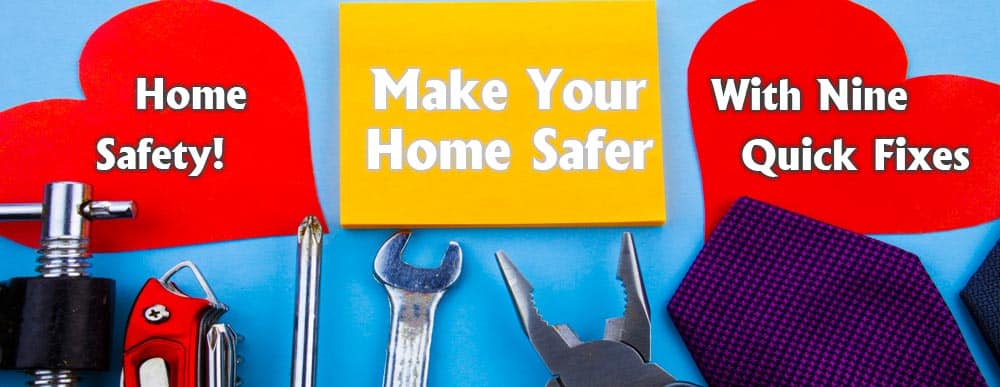
Make Your Home Safer with Nine Inexpensive Quick Fixes
Make your home safer without the power tools! Home improvement is a never-ending process for many people, and for those of us who aren’t handy, it can be a hassle, too.
Whether you are Handy or Not
Make your home safer. There are plenty of simple maintenance tasks you can do. Make simple improvements without power tools (or any tools at all in some instances). So do not worry about getting in over your head.
3 Tips to Maintain Water Pressure
You need running water in your home – but not water running in your home if you know what we mean. Yes, even minor leaks can cause major problems. They lead not only to higher water bills but to damage requiring costly repairs. Here are some easy ways to make sure your water stays where it should:- Check your appliances. They’re the most common source of water leaks in homes, so it’s worth taking a look at least once a year to check for problems. And the hoses that come with your washer and dishwasher can mean big trouble – they break down over time. Look for kinks and cracks, and replace if needed. Consider using reinforced hoses. Those with steel braiding or mesh won’t hold up forever, but they’re stronger than rubber or plastic.
- Watch water pressure. When water pressure is set too high, pipes, hoses, and water lines may leak or burst. Inexpensive gauges allow you to test water pressure. Reduce water pressure before it is a problem. Find gauges home-improvement stores.
- Consider installing water sensors. These can alert you to a leak or other problem soon after it occurs – some can even send messages to your smartphone.
3 Tips to Avoid Tripping Hazards
Keep your family (and your guests) on their feet. Millions of Americans – many of them older adults – get injured in falls each year. About 2.5 million were hurt in 2013 alone, according to the National Safety Council and the Centers for Disease Control and Prevention. Look around your home. Should you make some of these fixes?- Reduce clutter. Everything from small pieces of furniture to area rugs can pose a hazard. Make sure they’re in appropriate places and out of the way if possible.
- Add stability to stairs. Make sure stairways have sturdy rails, and maybe even non-slip strips, particularly outdoors.
- Let there be light. It’s hard to walk safely when you can’t see obstacles or potential trouble spots. Make sure your home is well-lit, and don’t forget night lights, too.
3 Tips to Keep Inside Air Clean
Pollution isn’t only an outside thing – the air in your home can be unhealthy, too. But helping people breathe a little easier isn’t hard when you follow these steps:- Test the air (and your detectors). Make sure you have working carbon monoxide and smoke detectors. Test them regularly. Also, consider testing your home for radon. Radon is a naturally occurring radioactive gas that can be dangerous over time.
- Check your filters and ducts. Keeping your furnace filter and air ducts clean will keep your air cleaner as well. And consider adding some of nature’s air filters: plants.
- Keep your home clean. Dust doesn’t only build upon the furniture – it ends up in the air as well. Regular cleaning means cleaner air (be sure to use safe products). Home improvement doesn’t have to mean a kitchen remodel or finishing the basement. Making your home safer, in fact, might be the best improvement of all.
Related posts:
Hunting Safety - 9 Expert Tips Making Every Hunting Season Safe ::
Where Do I Begin? Approved Expert Tips for Young Adult Car Insurance ::
Protect Your Beautiful Car - Authentic How-To for Classic Car Insurance
Why You Absolutely Need BOP - See Business Owners' Insurance Benefits
Protection - Best 9 Tips Help Get the Right RV Insurance
